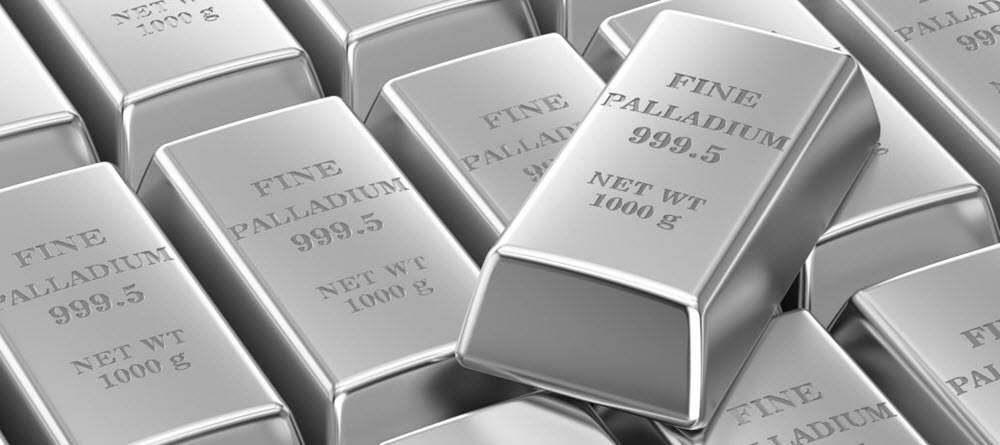Palladium commodity trading
Palladium is a rare metal named after the asteroid Pallas. Together with platinum, rhodium, ruthenium, iridium and osmium, palladium forms the platinum group metals (PGMs). All the PGMs have similar chemical properties, but palladium has a lower melting point and a lower density than any other PGM.

More than half of the supply of palladium and its congener platinum is currently used for catalytic converters, and the automotive industry greatly impacts the price of palladium. Since platinum is a congener, we must also be aware of the market interplay between palladium and platinum.
As a commodity, the palladium bullion has the ISO currency codes XPD and 964. Only four metals have been assigned such codes (the others are gold, silver and platinum).
Short facts about palladium
Symbol: Pd
Atomic number: 46
Appearance: It is a lustrous silvery-white metal
History: Palladium was first identified and named in 1803 by the English chemist William Hyde Wollaston. He named the metal after the then newly discovered asteroid Pallas.
Demand
As mentioned above, the automotive industry is a very strong force behind the price of palladium, and stronger automotive sales and forecasts typically correlate with a boosted palladium price as the palladium is used in catalytic converters to make exhaust fumes less harmful.
Other examples of notable uses of palladium are electronics, dentistry, medicine, hydrogen purification, aircraft spark plugs, groundwater treatment, jewellery, watches, and high-end transverse flutes. Palladium is a key component in a type of fuel cells where hydrogen and oxygen react to produce electricity, heat and water.
Catalytic converters
Palladium (and its congener platinum) is used in catalytic converters which can convert as much as 90% of harmful hydrocarbons, carbon monoxide, and nitrogen dioxide in exhaust fumes into nitrogen, carbon dioxide, and water vapour.
Electronics
As early as the mid-2000s, the electronic sector was already consuming over 1 million troy ounces (around 33 tonnes) of palladium each year.
- Palladium can be used in multi-layer ceramic capacitors, where palladium and palladium-silver alloy function as electrodes.
- Palladium, or a palladium-nickel alloy, can be used for component and connector plating in consumer electronics.
Medicine and dentistry
- Palladium is used for certain surgical instruments and blood testing strips.
- Some dental amalgam variants include palladium to reduce corrosion. The amount is typically very small, around 0.5%.
Supply
Mining
As far as we know, ore deposits of palladium are rare. The most extensive known deposits:
- The Norilsk Complex, roughly 300 km north of the Arctic Circle in Russia
- The Norite belt of the Bushveld Igneous Complex in the Transvaal Basin of South Africa
- The Sudbury Basin and Thunder Bay District of Ontario, Canada
- The Stillwater Complex in Montana, United States
In 2016, the global mine production of palladium was 208,000 kilograms. Of this, 82,000 kilograms came from Russia, followed by South Africa, Canada, and the United States. The Norilsk Nickel company in Russia accounted for almost 40% of the global production.
Minor deposits
Palladium is sometimes encountered as a free metal alloyed with gold or PGMs in the Ural Mountains, Australia, Ethiopia, and the Americas. So far, these alloy finds only play a very small role for the global mining production of palladium.
Recycling / recovery
Palladium is recovered from scrapped catalytic converters.
Nuclear fission
Palladium is produced in nuclear fission reactors and can be extracted from spent nuclear fuel. This is not done on a commercial basis anywhere in the world and none of the nuclear reprocessing facilities are equipped to extract palladium.
This article was last updated on: September 19, 2022